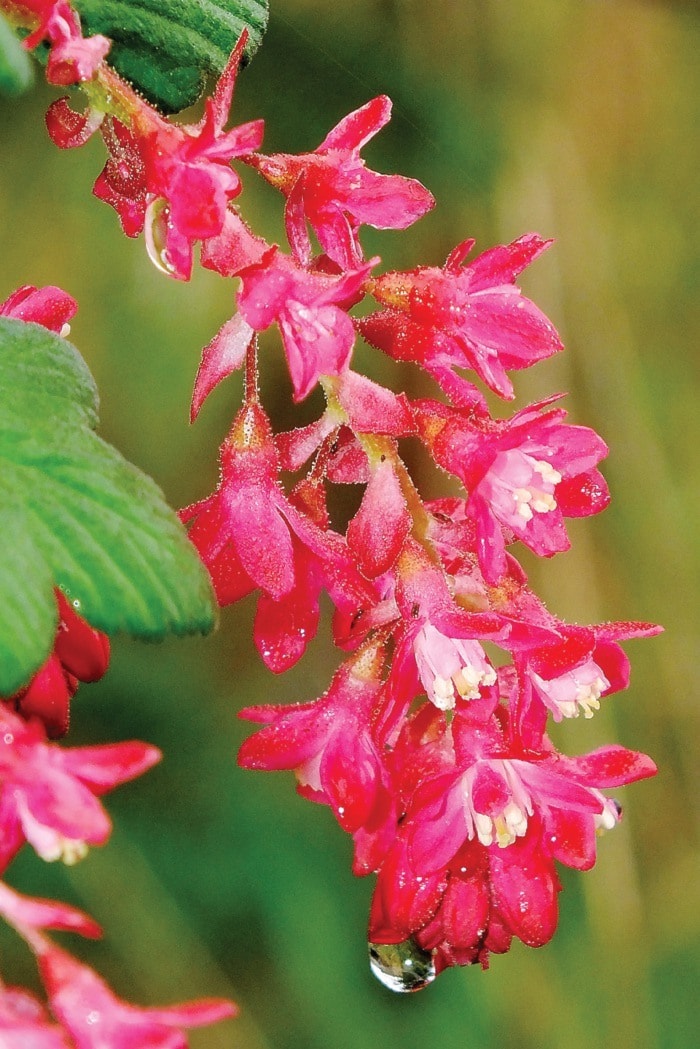The first wave of spring wildflowers splashed hot and pink across Vancouver Island’s natural areas over the past few weeks.
Although the golden swamp lantern (skunk cabbage) still reigns supreme in swampy areas, it’s the pinks that first catch our attention in early April.
When I first laid eyes on the native shrub called red-flowering currant, my first thought was that this beautiful plant must have escaped a nearby garden. Never did I think it could be wild.
This lovely, early-blooming currant represents a primary nectar source for hummingbirds, as it blossoms just in time for the hummers’ return from southern wintering grounds.
“Gooseberries have prickles. Currants do not.” This native perennial stays true to the old adage by bearing no thorns.
Diminutive, beautifully-formed (7-10 mm) blossoms hang in drooping clusters, while its five-lobed leaves resembling chubby foliage fingers make for easy plant identification.
All currants have flowers, but only Ribes sanguineum deserves the colour as part of its common name. The Latin ‘sanguineum’ means ‘blood-red’, although the blossoms display a range of shades from fiery carmine (in sunny locales) to blush-pink (in the shade).
In 1827, plant-hunter and explorer David Douglas documented this “exceedingly handsome plant” and the seeds he brought back to England more than paid the entire cost of his two-year expedition (Lewis J. Clark). Domestic gardeners consider red-flowering currant a premier ornamental shrub, and one which will grow to heights of one to three metres. If found outside of parkland, a few cuttings will root readily in sand, but otherwise, buy from a native plant nursery to preserve the wild treasure.
E-mail Christine at: wildernesswest@shaw.ca.
